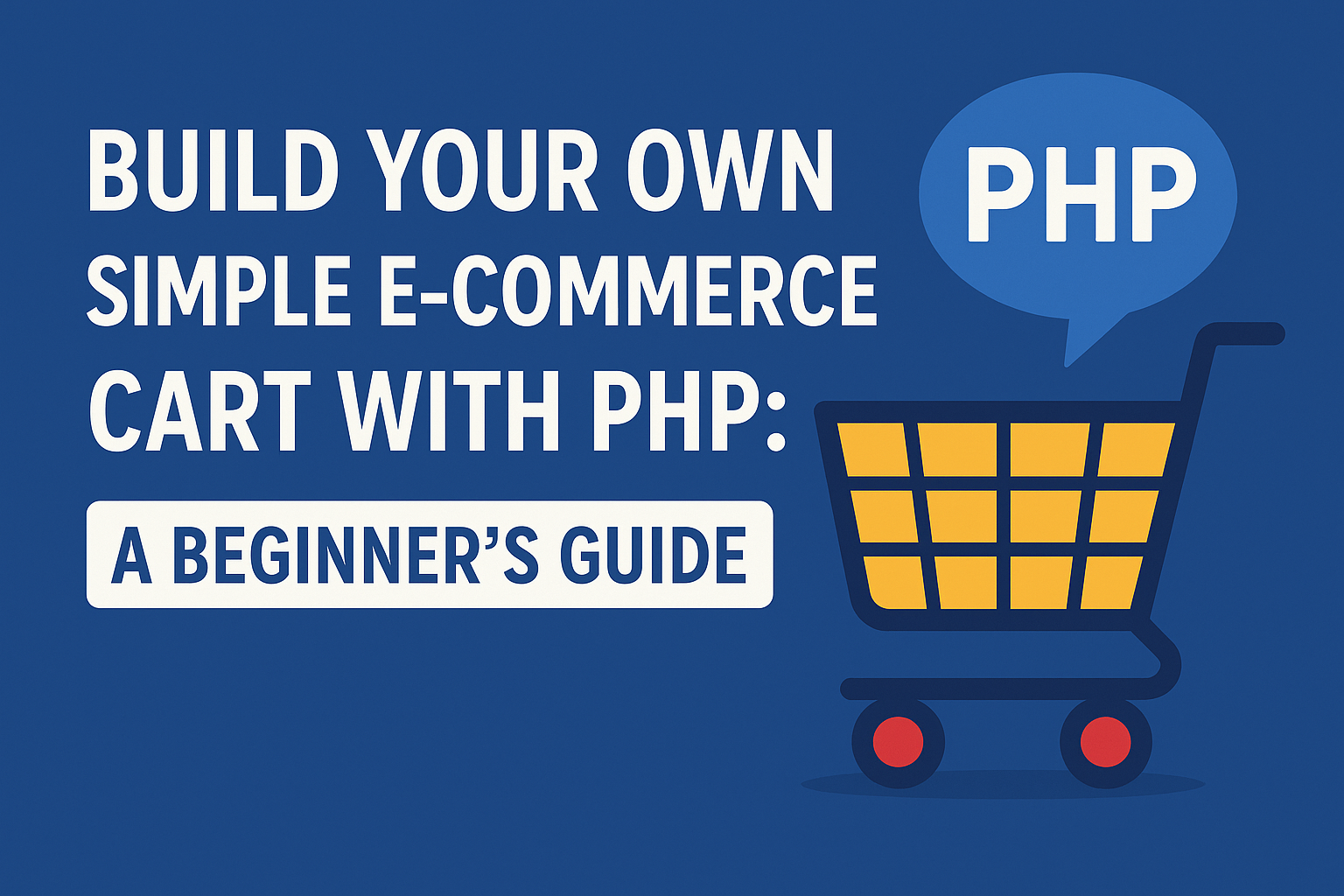PHP Projects & Practice:- Build Your Own Simple E-commerce Cart with PHP: A Beginner’s Guide
Build Your Own Simple E-commerce Cart with PHP: A Beginner’s Guide
Ever wondered how online stores manage your shopping list? It’s all about the “cart”! If you’re looking to dive into web development or just want to add a cool feature to your website, building a simple e-commerce cart with PHP is an excellent starting point. This project is not only fun but also teaches you fundamental web development concepts.
Why PHP for Your E-commerce Cart?
PHP is a powerhouse for web development, especially for dynamic websites. It’s widely used, well-documented, and incredibly versatile. For our simple cart, PHP allows us to easily handle product information, manage user sessions, and process orders – all essential ingredients for a smooth online shopping experience.
Getting Started: What You’ll Need
Before we jump into the code, here’s what you’ll need:
- A Web Server: WAMP (for Windows), MAMP (for Mac), or LAMP (for Linux) are popular choices. These bundles include Apache (our web server) and MySQL (our database).
- PHP: Of course! It usually comes bundled with the web servers mentioned above.
- A Text Editor: VS Code, Sublime Text, or Notepad++ are great options for writing your code.
- Basic HTML & CSS Knowledge: You’ll need this to structure and style your cart’s appearance.
The Core Components of Your PHP E-commerce Cart
Let’s break down the essential parts of our simple cart:
- Product Display:
- Goal: Show off your awesome products to users.
- How: You’ll use PHP to fetch product details (like name, price, image) from a database (MySQL is perfect for this) and display them on your website using HTML. Each product will likely have an “Add to Cart” button.
- Adding Items to the Cart:
- Goal: When a user clicks “Add to Cart,” the item should be remembered.
- How: This is where PHP sessions come in handy! A session allows your website to “remember” information about a user as they browse. When an item is added, we’ll store its ID and quantity in a session variable. This keeps the cart persistent as the user navigates your site.
- Viewing the Cart:
- Goal: Allow users to see what they’ve added.
- How: Create a dedicated “Cart” page. On this page, PHP will read the product IDs and quantities from the session. Then, it will fetch the full product details from your database again to display a clear summary, including subtotal.
- Updating and Removing Items:
- Goal: Users should be able to change quantities or remove items.
- How: Implement small forms next to each cart item. When submitted, PHP will update or remove the corresponding item from the session, refreshing the cart display.
- Checkout (Simplified):
- Goal: A basic path to finalize the order.
- How: For a simple cart, this might just involve displaying the final total and perhaps a “Proceed to Checkout” button that confirms the order. In a real-world scenario, this would involve payment gateway integration and order processing, but for practice, a basic confirmation is sufficient.
High SEO Words to Remember:
- PHP Development: Core skill for building dynamic websites.
- E-commerce Cart: The central focus of our project.
- Shopping Cart: Another common term for the same concept.
- Web Development: The broader field we’re exploring.
- MySQL Database: Essential for storing product information.
- PHP Sessions: Key to maintaining user cart data.
- Online Store: The ultimate goal for e-commerce.
- Website Building: The act of creating your online presence.
- Dynamic Website: A website that changes content based on user interaction or data.
- Product Management: Organizing and displaying your goods.
- User Experience (UX): Designing for easy and enjoyable shopping.
- Add to Cart Functionality: The core interaction.
- Checkout Process: The final steps of a purchase.
- Web Programming: The act of writing code for the web.
- Beginner Project: Ideal for learning new skills.
Ready to Code?
Building a simple e-commerce cart is a fantastic way to solidify your PHP skills and understand the fundamental logic behind online shopping. Don’t be afraid to experiment, make mistakes, and learn from them. There are countless tutorials and resources available online to guide you through the coding process step-by-step.
So, roll up your sleeves, fire up your text editor, and start building your very own PHP e-commerce cart today! Happy coding!




